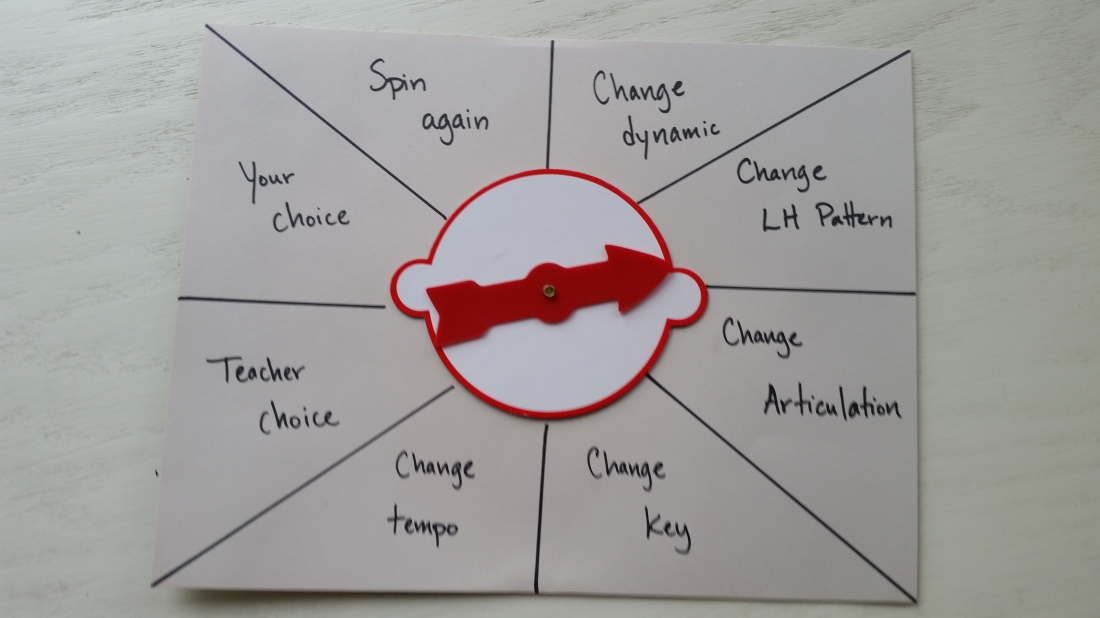Most of the kids love improv, and this activity has the advantage of developing their sense of beat and musicality at the same time.
What You Need:
- A spinner (or 2 dice if you prefer)
- A blank piece of paper
- Coin for tossing (optional)
Setup:
- If you are using a spinner, place it in the center of your page and section off the paper (see the picture). In each section, write one way to change up an improv. For example, change dynamic, change accompaniment pattern, change articulation, change key signature, change tempo, teacher’s choice, student’s choice, spin again, etc.
- If you are using dice, write down the numbers 2-12 and assign each number one of the ways to change up an improv.
How to Play:
- Explain that this improv game is going to use a chord progression: I – IV – V – I if the student’s had enough music theory to understand that or Cmaj – Fmaj – Gmaj – Cmaj if they haven’t. Each chord is going to get one full measure, so the improv will be a four measure improv. Play each of those block chords as whole notes for the student. That is how long they have to create an improvised melody and return to the home note (or tonic).
- To start with the most basic improv, the teacher will play those four measures while the student improvises a melody. You can do this several times if the student needs help understanding when to wrap up the melody.
- After that it is time to mix things up. Have the student spin the spinner or roll the dice. Whereever they land, they need to follow those instructions (change the dynamic, tempo, etc.). If they land on change the accompaniment, move out of block chords into some other pattern, like arpeggios, oom-pa, etc., but keep the chord progression the same.
- Repeat as many times as you have time for.
- Depending on the level of the student, you can either make each new spin a fresh improv or you can make the changes cumulative so that you end up playing, for example, in D major, presto, and fortissimo all at the same time.
- Also depending on the level of the student, you can flip the coin each time to determine who is on melody and who is doing the accompaniment.
